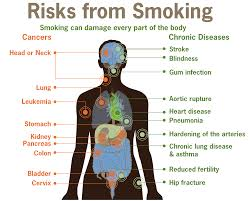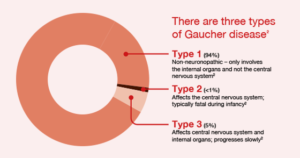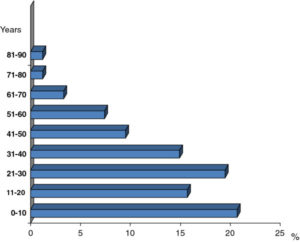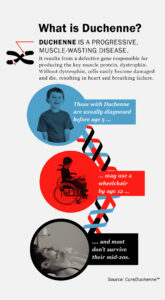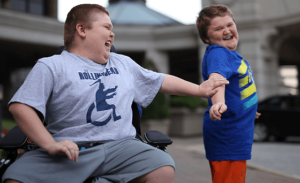Through an accurate reference the Centers for Disease Control and Prevention, who wants to save lives and protect people, support the following:
Smoking is estimated to increase the risk—
-
- For coronary heart disease by 2 to 4 times1,6
- For stroke by 2 to 4 times1
- Of men developing lung cancer by 25 times1
- Of women developing lung cancer by 25.7 times1
Smoking causes diminished overall heath, such as self-reported poor health, increased absenteeism from work, and increased health care utilization and cost.
Smokers are at greater risk for diseases that affect the engine of the body=The heart and its branches=The circulatory system (putting a smoker at high risk for cardiovascular disease).
- Smoking causes stroke and coronary heart disease—the leading causes of death in the United States.
- Even people who smoke fewer than five cigarettes a day can have early signs of cardiovascular disease.
- Smoking damages blood vessels and can make them thicken and grow narrower. This makes your heart beat faster and your blood pressure go up. Clots can also form.
- A heart attack occurs when a clot blocks the blood flow to your heart. When this happens, your heart cannot get enough oxygen causing starvation of food, being oxygen to the heart tissue. This damages the heart muscle, and part of the heart muscle can die, which is what exactly happens with a heart attack where angina (lack of 02 is reversible).
- A stroke occurs when a clot blocks the blood flow to part of your brain or when a blood vessel in or around your brain bursts causing again starvation of food, being 02, just in a different tissue part. Get it oxygen is the food to all our tissues of the body
- Blockages caused by smoking can also reduce blood flow to your skin and legs (For example Peripheral Vascular Disease= PVD). Ever see the commercial with a person telling you to stop smoking with fingers surgically removed or limbs, PVD is what occurred to that individual and the person didn’t stop smoking. Due to this behavior what happened the vessels of the individual’s limbs became so narrowed that it cut off oxygenated blood supply to those tissue parts causing ischemia-lack of oxygen, which led to necrosis of the tissue (death) and the part had to be surgi-cally removed. Now that individual can’t walk or grasp things with those limbs that were operated on. Is smoking worth this consequence? I don’t think so, what about you? Just think about it if you still smoke.Smoking can cause lung disease by damaging your airways and the small air sacs (alveoli) found in your lungs. What actually happens to the lung tissue is the pin point openings (alveoli) keeps expanding to a wider opening. The alveoli is responsible of oxygen and carbon dioxide exchange when we inhale and exhale but with the alveoli stretched the exchange of the gases gets poor.
- Smoking effects the transmission of the body=The Lungs
- Lung diseases caused by smoking include COPD, which includes emphysema (especially) and chronic bronchitis.
- Cigarette smoking causes most cases of lung cancer.
- If you have asthma, tobacco smoke can trigger an attack or make an attack worse.1,2
- Smokers are 12 to 13 times more likely to die from COPD than nonsmokers.
Smoking can cause cancer in almost every area of the body. If nobody smoked, one of every three cancer deaths in the United States would not happen. Smoking increases risk of dying from cancer and other diseases in cancer patients and survivors.
For those who quit smoking what risks you reduce:
- Quitting smoking cuts cardiovascular risks. Just 1 year after quitting smoking, your risk for a heart attack drops sharply.2
- Within 2 to 5 years after quitting smoking, your risk for stroke could fall to about the same as a nonsmoker’s.2
- If you quit smoking, your risks for cancers of the mouth, throat, esophagus, and bladder drop by half within 5 years.2
- Ten years after you quit smoking, your risk for lung cancer drops by half.
Again, if you smoke you may want to consider stopping; give it a thought.

